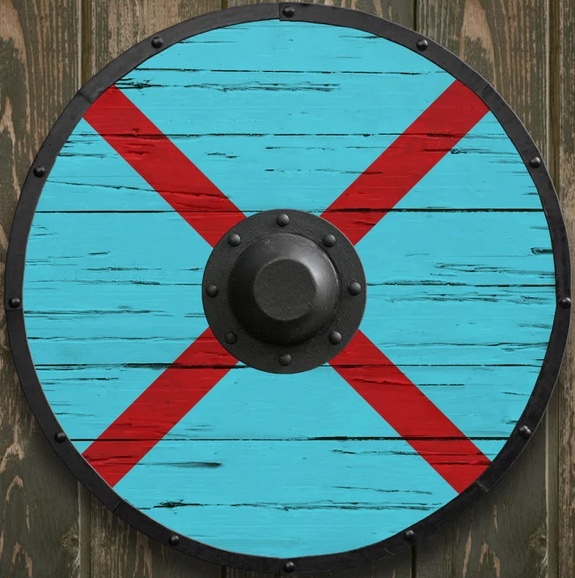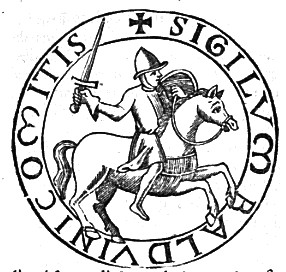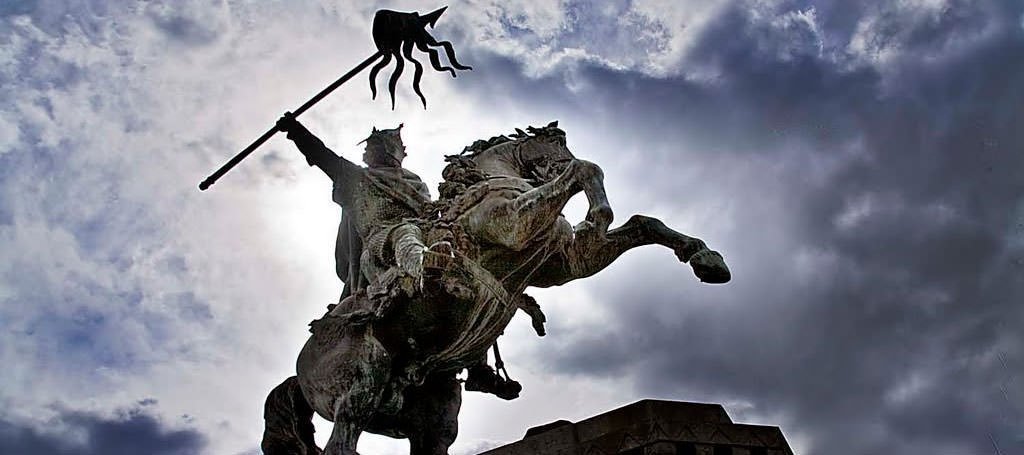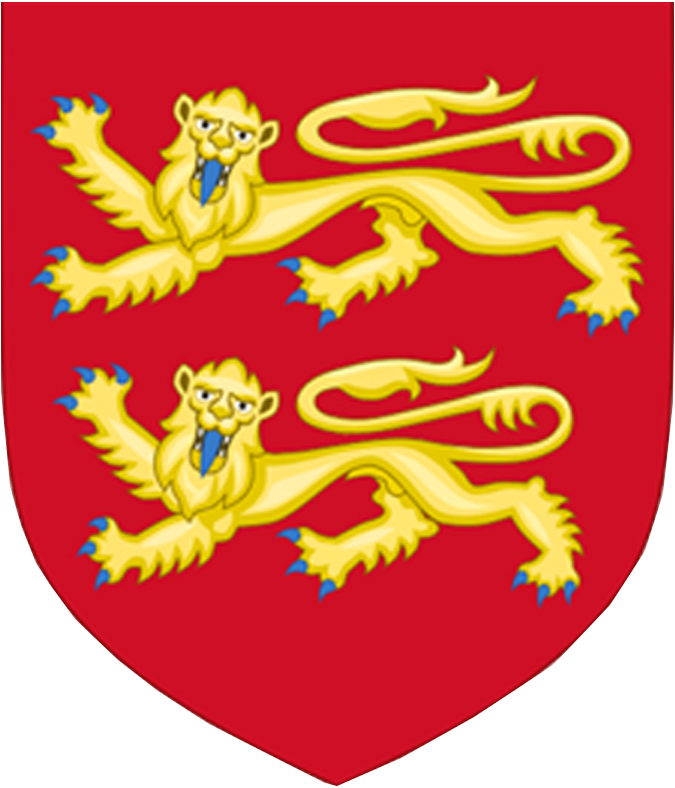Normandy to England Ancestry
Sources:
- Book of Bruce: Ancestors and Descendants of King Robert of Scotland by Lyman Horace Weeks (1907)
- Henry I of England article on Wikipedia and reputable articles thereof regarding his ancestry including those linked in the below tree
- Geni.com Master Profile: Henry I "Beauclerc", King of England and pages thereof including those linked in the below tree
- The Archbishops of Dol and the origin of the Stewarts by Paul A. Fox from Foundation for Medieval Genealogy
- Genealogics: Adela of Normandy Comtesse d'Aumale
- King, Edwin. Lionheart: Living in History, England 1190AD (1987).
- The Descendants of William the Conqueror by Alan G. Freer, Society of Genealogists, London, England
- English Monarchs: History of the Kings and Queens of England: William the Conqueror, Robert "The Devil" a.k.a. "The Magnificent" - Duke of Normandy and Matilda of Flanders
- Find-A-Grave Memorial: William the Conqueror and pages thereof
This is currently being researched.
b. d. |
m. | b. d. |
b. d. |
m. | b. d. |
b. d. |
m. | b. d. |
b. d. |
m. | b. d. |
b. d. |
m. | b. d. |
b. d. |
m. | b. d. |
b. d. |
m. | b. d. |
b. d. |
m. | b. d. |
b. d. |
m. | b. d. |
b. d. |
m. | b. d. |
|||||||||||||||||||||||||||||||||
| | | | ↓ |
| | | ↓ |
| | | ↓ |
| | | ↓ |
| | | ↓ |
| | | ↓ |
| | | ↓ |
| | | ↓ |
| | | ↓ |
| | | ↓ |
|||||||||||||||||||||||||||||||||||||||||||||||||||||
 Ancestry through parents Richard I, "The Fearless", Duke of Normandy, and Gunnor(a) |
Conan I 'le Tort' de Rennes, duc de Bretagne (Duke of Brittany) b. d. 27 June 992 at the Battle of Conquereuil, Loire-Atlantique, Pays de la Loire, France (killed in battle) |
m. | Ermengarde Gerberga d'Anjou, Duchesse de Bretagne b. 11 November 958, Duchy of Anjou (now Pays de la Loire), France d. 27 June 1022, Duchy of Anjou (now Pays de la Loire), France |
b. d. |
m. | b. d. |
b. d. |
m. | b. d. |
Arnulf II, Count of Flanders b. d. |
m. | Rozala of Lombardy b. d. |
Frederick of Luxembourg b. d. |
m. | Ermentrude, countess of Gleiberg? b. d. |
|||||||||||||||||||||||||||||||||||||||||||||||
 |
| | | ↓ |
| | | ↓ |
| | | ↓ |
| | | ↓ |
| | | ↓ |
| | | ↓ |
||||||||||||||||||||||||||||||||||||||||||||||||||||||||
 |
Richard II, Duke of Normandy (Richard FitzRichard "The Good") b. 23 August 963, Lot-et-Garonne, Aquitaine, France d. 28 August 1026, Fécamp, Seine-Maritime, Haute-Normandie, France Find-A-Grave |
m. | Judith of Brittany b. 982, France d. 16 June 1017, France Find-A-Grave |
Fulbert A tanner of Falaise, later a chamberlain of Duke Robert b. d. |
Source for this couple: English Monarchs: Robert "The Devil" a.k.a. "The Magnificent" | (his mistress) b. d. |
Baldwin IV, Count of Flanders b. d. |
m. | Ogive of Luxembourg b. d. |
 Ancestry through parents Robert II of France and Contance of Arles |
||||||||||||||||||||||||||||||||||||||||||||||||||||
 |
 | || | | | | ↓ |
| | | | | | ↓ |
"[T]he civil war in Flanders [was] fought between Baldwin V, Count of Flanders and his father Baldwin IV, whom the younger Baldwin had driven out of Flanders. Baldwin V, supported by his father-in-law, King Robert II of France, was persuaded to make peace with his father in 1030" (English Monarchs: Robert "The Devil" a.k.a. "The Magnificent). |
| | | | | | ↓ |
| | | | | | ↓ |
 |
||||||||||||||||||||||||||||||||||||||||||||||||||||||||
|
Robert The Devil "Also called Robert the Magnificent. The father of William the Conqueror, Robert became Duke of Normandy in 1027. He was a capable ruler who did much to stabilize Normandy. In 1031, in exchange for his support of the King of France, he received the Vexin (qv). He died while returning from a pilgrmiage to Jerusalem in 1035" (Source: King, p. 91). "Robert became involved in the civil war in Flanders, fought between Baldwin V, Count of Flanders and his father Baldwin IV, whom the younger Baldwin had driven out of Flanders. Baldwin V, supported by his father-in-law, King Robert II of France, was persuaded to make peace with his father in 1030" (English Monarchs: Robert "The Devil" a.k.a. "The Magnificent).
|
Robert FitzRichard (Robert I, Duke of Normandy) (Robert the Magnificent) b. 22 June 1000, Rouen, Seine Inferieure, Haute-Normandie, France d. 3 July 1035, Bahçelievler, Istanbul, Turkey |
unmarried
"Herleve was reported to have attracted Duke Robert with her dancing, in some accounts, he is said to have first caught sight of her while she was washing her linen in the castle moat. ... William's mother, Herleve, also had a daughter, Adelaide, to Duke Robert. Although they had a long relationship, the gap in their social standing rendered marriage out of the question and Herleve was married off to one of Robert's vassals, Herluin, a knight. From this marriage, Herleve produced two further sons, Robert, who later became Count of Mortain and Odo, destined to become Bishop of Bayeux and Earl of Kent and also to play a part in England's history" |
Herleva (also seen as Herleva of Falaise or Herleve and sometimes called Arlette) b. ca. 1003, Falaise, Calvados, Lower Normandy, France d. ca. 1050, Eure, Upper Normandy, France |
 Seal of Baldwin V (Source) |
Baldwin V, Count of Flanders b. ca. 19 August 1012, Bihorel, Seine-Maritime, Normandy, France d. 1 September 1067, Lille, Nord, Nord-Pas-de-Calais, France |
m. | Adela of France, Countess of Flanders b. 5 March 1009, Toulouse, Haute-Garonne, Midi-Pyrénées, France d. January 1079, Mesen, West-Vlaanderen, Vlaams Gewest, Belgium  |
|||||||||||||||||||||||||||||||||||||||||||||||||||||||
 |
| | | ↓ |
| | | ↓ |
||||||||||||||||||||||||||||||||||||||||||||||||||||||||||||
| | | | ↓ |
| | | ↓ |
| | | ↓ |
 |
|||||||||||||||||||||||||||||||||||||||||||||||||||||||||||
 |
| | | | | | | | | | | | | | | ↓ |
| | ↓ descendants through daughter Adelaide (Adela of Normandy Comtesse d'Aumale) via her marriage to Lambert II, Count of Lens |
| | | | | | | | | | | | | | | ↓ |
 |
||||||||||||||||||||||||||||||||||||||||||||||||||||||||||
 |
| | | ↓ |
| | | ↓ |
 |
|||||||||||||||||||||||||||||||||||||||||||||||||||||||||||
The Bayeux Tapestrydepicting the Battle of Hastings14 October 1066 "An embroidered tapestry over two hundred feet long detailing the story of the Norman Conquest. It was commisoned from Kentish embroiderers in 1067 by Bishop Odo, the Earl of Kent and William the Conqueror's half-brother. The tapestry is displayed in the bishop's palace in Bayeux" (Source: King, p. 34).  Scroll horizontally to see it all. |
William the Conqueror (King William I of England)  b. 14 October 1024 or ca. 1028, Château de Base, Falaise, Calvados, Normandie, France d. 9 September 1087, Prieuré de Saint-Gervais, Rouen, Seine-Maritime, Haute-Normandie, France (from wounds suffered at the siege of Mantes) Burial: Abbatiale Saint-Étienne, Abbaye aux Hommes, Caen, Calvados, Basse-Normandie, France
|
William was the acknowledged illegitimate son of Robert III, Duke of Normandy. Born at Falaise in 1027, the barons of Normandy accepted him as his father's heir when Duke Robert died in 1035. His youth was fraught with danger, but he survived numerous plots and rebellions (My note: such as in 1054 at the Battle of Mortemer, in Normandy, when Henry I of France was defeated by William, who was one of Henry's vassals) to emerge by 1063 as the single most powerful lord in France, a man with the ambition and talent to seize a throne.
William was also called "William the Bastard, William of Normandy, and the Tanner (a reference to his mother's family). William claimed the English throne after the death of Edward the Confessor, and enforced his claim by defeating Harold II at the Battle of Hastings. He instituted Norman feudal practices but retained the Anglo-Saxon shire court, sheriff and fyrd (qv). He ordered the making of the Domesday Book in 1086.
m. 1051/1052 |
Matilda of Flanders, Queen Consort of England b. ca. 1031, Ghent, East Flanders, Flanders, Belgium d. 2 November 1083, Base-Normandie, Caen, Calvados, Normandy, France Burial: Abbaye-aux-Dames, Place de la Reine Mathilde, Caen, Basse-Normandie, France  |
 |
||||||||||||||||||||||||||||||||||||||||||||||||||||||||||
| Image: Direct descendant Kings of England, Norman Dynasty |   |
| | ↓ |
 |
|||||||||||||||||||||||||||||||||||||||||||||||||||||||||||
|
Henry, the youngest son of William the Conqueror was an aggressive and engergetic man. His reign was marked by his careful, harsh and methodical personality, and his mastery of the arts of government. He was also a plotter; when his elder brothers quarrelled he changed sides repeatedly, seeking his own advantage and eventually making himself thoroughly distrusted by both. In 1091 Robert and William made a treaty whereby they agreed if either died without leaving an heir, one would be succeeded by the other. The express intent of this treaty was to disinherit their brother.
|
  |
King Henry I of England (Henry Beauclerc) b. ca. September 1068, Selby, North Yorkshire, England d. 1 December 1135, Saint-Denis-le-Ferment, Department de Eure, Haute Normandie, France 
Photo credit: © Public Domain via Wikimedia Commons. "Alan fitz Flaald became a close friend of Henry, later King Henry I of England, during the period when Henry controlled Mont-Saint-Michel as Count of the Cotentin" in western Normandy (Fox, p. 73). |
 |
|||||||||||||||||||||||||||||||||||||||||||||||||||||||||||
| | | | ↓ descendants by a concubine through son Robert De Caen via marriage to Maud (Mable/Sibyl) Fitz Hamon |
||||||||||||||||||||||||||||||||||||||||||||||||||||||||||||||